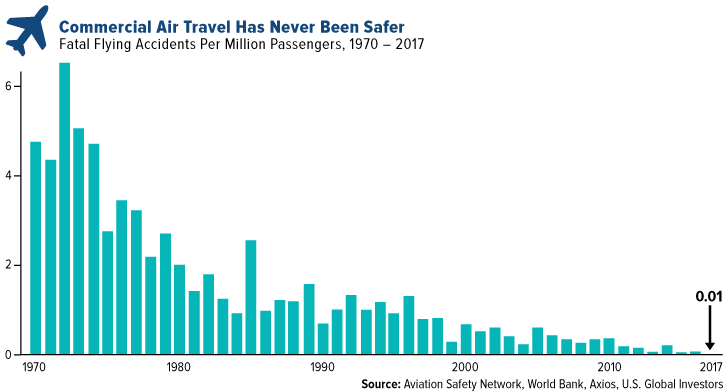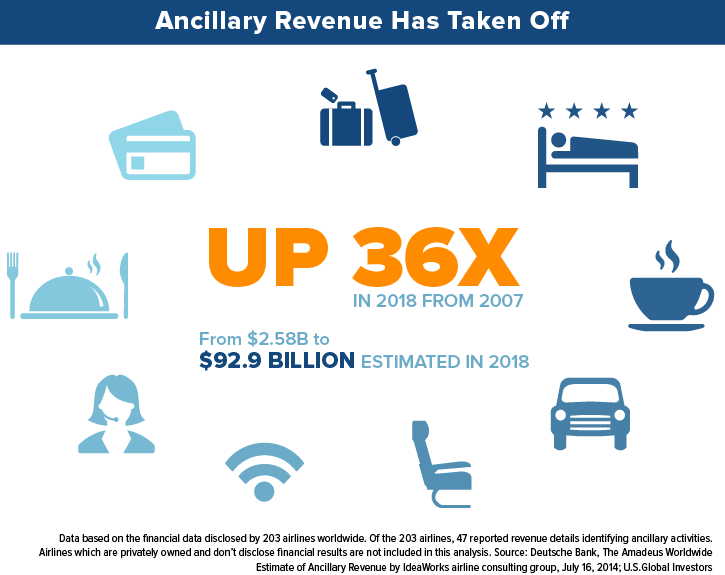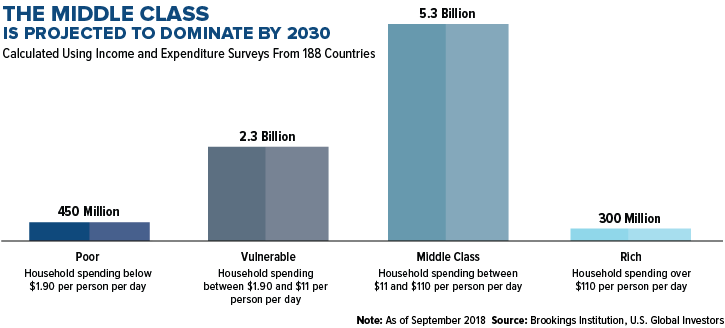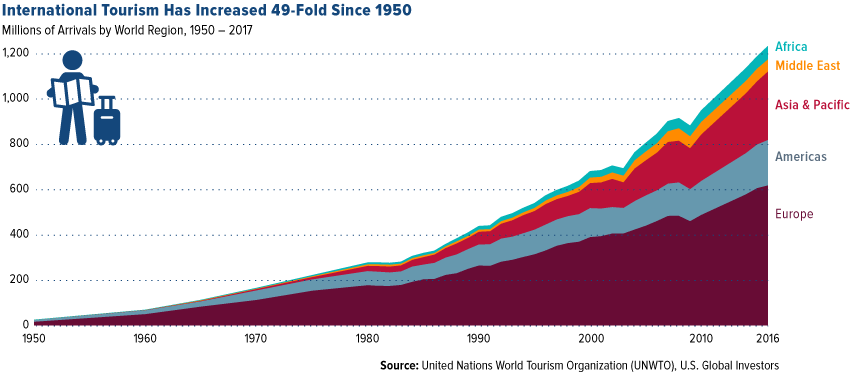
The U.S. Global Jets ETF (JETS) turns four at the end of April, and to celebrate, we want to share with you four big reasons why we believe the global airlines industry continues to look interesting in the long term.
Some airlines investors were understandably rattled by the unfortunate news last month that a Boeing 737 MAX, flown by Ethiopian Airlines, malfunctioned and crashed, claiming the lives of all passengers on board. In a press release dated April 5, Boeing CEO Dennis Muilenburg admitted that the manufacturer is at fault, before adding that there’s a plan in place to make sure such an accident never happens again. “We have the responsibility to eliminate this risk, and we know how to do it,” Muilenburg stated.
This isn’t the end of Boeing’s pain, but we feel positive that the company will release a satisfactory software update and return confidence to carriers and consumers alike.
In the meantime, let’s look at four big reasons why we believe airlines are an attractive long-term investment.
1. Technology Has Helped Make Air Travel Incredibly Safe
An obvious place to start is by pointing out that, despite two recent crashes involving the 737 MAX, commercial air travel has never been safer than it is today. According to Aviation Safety Network, 2017 was the safest year on record with no fatalities due to aviation. Statistically, that comes out to an insignificant 0.01 per 1 million passengers.

Here’s another way to look at it. At any given moment, there’s an average of around 9,700 planes in the sky worldwide carrying some 1.3 million people, according to FlightAware.
This phenomenal safety record is thanks in large part to better pilot training and more sophisticated technology, which only continues to improve.
2. New Revenue Streams Mean Greater Cash Flow
Airfare inflation has been minimal for years, so one of the ways airlines have generated higher revenues is through ancillary, or non-ticket, fees. Think fees for extra baggage, extra legroom, hotel stays, concessions, upgrades and more. Between 2007 and 2018, this type of revenue expanded 36 times, from only $2.58 billion to an estimated $92.9 billion. Cash flow has improved, and the global airlines industry is projected to book its 10th straight year of profitability.

One of the most profitable non-operational revenue streams has been Delta Air Lines’ deal with American Express. The Atlanta-based carrier, in fact, just announced that it renewed this partnership through 2029, extending the Delta SkyMiles Credit Card for an additional 11 years. Delta says it expects the benefits from this relationship to double to nearly $7 billion a year by 2023, up from around $3.3 billion in 2018.
The carrier also reported record earnings for the first quarter of 2019. Profits jumped 31 percent to $730 million, or $1.09 per share, up from $557 million in the same period a year ago.
3. Half the World Is Now Middle Class or Wealthier
“Something of enormous global significance is happening almost without notice. For the first time since agriculture-based civilization began 10,000 years ago, the majority of humankind is no longer poor or vulnerable to falling into poverty.”
That’s how the Brookings Institution’s Homi Kharas and Kristofer Hamel opened their September 2018 report announcing the news that more than half of the world is now middle class or wealthier. According to Kharas and Hamel, as many as 3.8 billion people now live in households with enough discretionary income to be considered at least “middle class.”
By 2030, that number is projected to surge to 5.3 billion. This is bullish for the global airline industry, as it means more people should be able to afford airfare.

4. International Tourism Continues to Rise
On a final but related note, international tourism has surged dramatically over the past several decades, with few signs of slowing down. According to the United Nations World Tourism Organization (UNWTO), the number of international tourists steadily grown from an estimated 25 million in 1950 to around 1.2 billion in 2017. That’s an amazing 49-fold increase.

Although there are a number of different modes of transportation, airlines are the main engine of international travel. That’s especially the case today with airfare relatively affordable and an increasing number of people around the world with discretionary income.
How to Participate
The U.S. Global Jets ETF (JETS) provides investors access not only to domestic carriers but the entire global airline industry, including airline operators, airports and manufacturers from all over the world. Learn more today by clicking here!
Ancillary fees/revenue, in the airline industry, is revenue from non-ticket sources, such a baggage fees and on-board food and services, and has become an important financial component for low-cost carriers.
Cash flow is the total amount of money being transferred into and out of business, especially as affecting liquidity.
All opinions expressed and data provided are subject to change without notice. Some of these opinions may not be appropriate to every investor.
